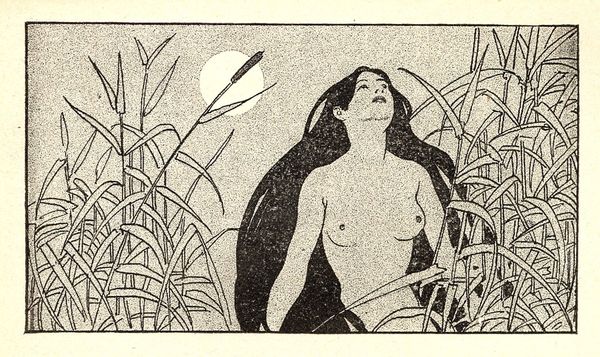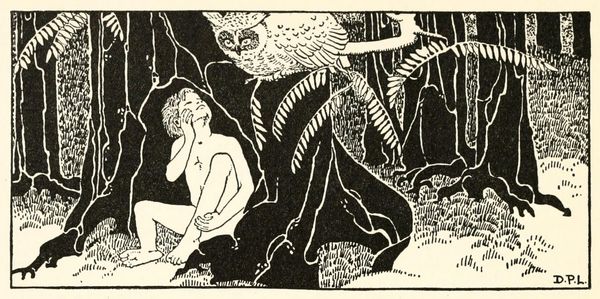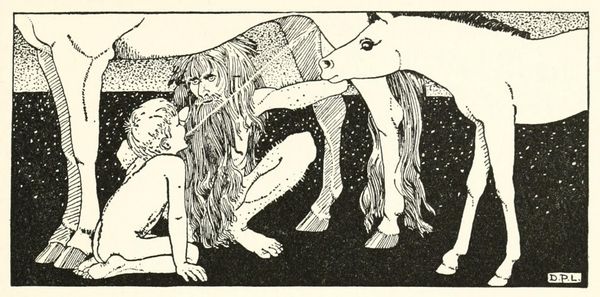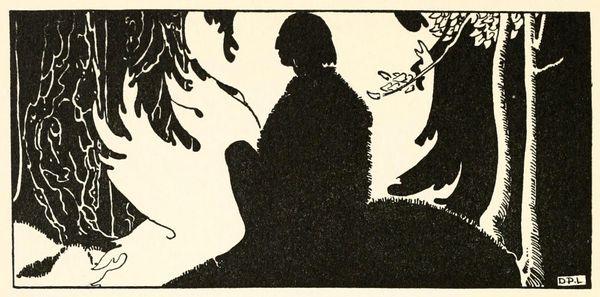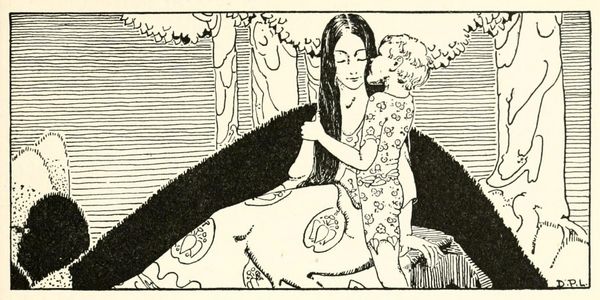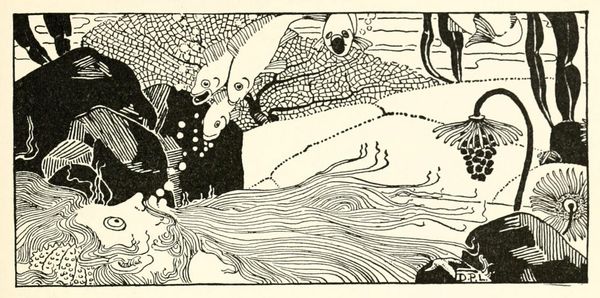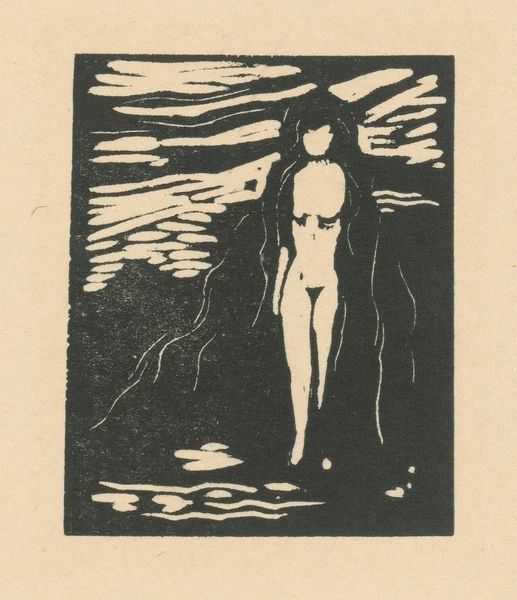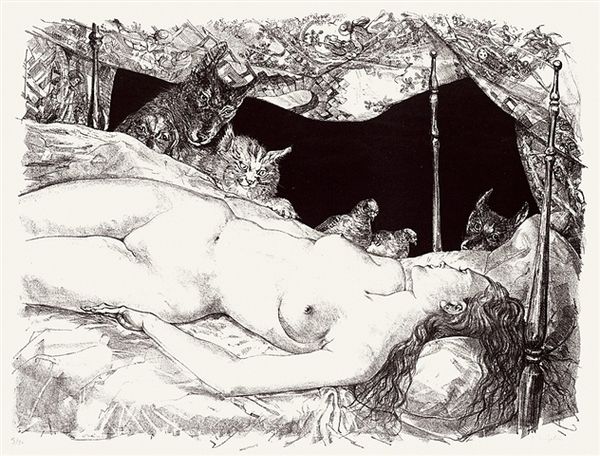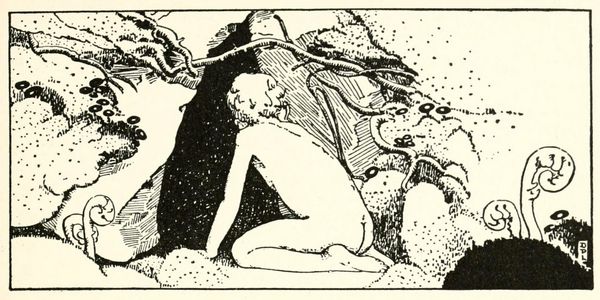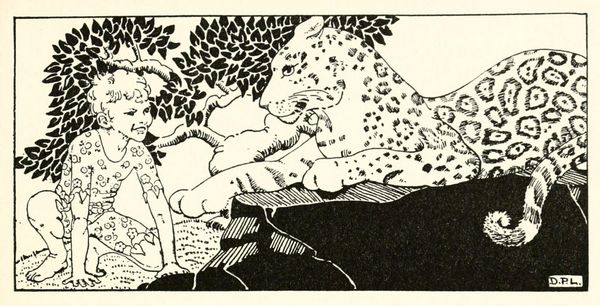
drawing, ink, pencil
#
portrait
#
drawing
#
pen illustration
#
arts-&-crafts-movement
#
line drawing illustration
#
landscape
#
figuration
#
ink line art
#
ink
#
pencil
#
line
#
symbolism
#
nude
Copyright: Public domain US
Editor: We’re looking at Dorothy Lathrop’s "A Little Boy Lost," created around 1920. It’s a pen and ink drawing with some pencil, and the level of detail is amazing. The image feels both idyllic and a little melancholic to me. What symbols do you see working here? Curator: The title itself is the first clue. "Lost" evokes not only physical displacement but also a deeper sense of disconnection, perhaps from innocence or belonging. Look at how the boy is positioned—recumbent, exposed. This vulnerability is further amplified by the surrounding landscape. Editor: You mean how the wheat seems to surround him? Curator: Precisely. But also, consider the birds flying overhead. In many cultures, birds are potent symbols of freedom, but here, their distance might emphasize the boy’s own grounded, even trapped state. What does the horizon line convey to you? Editor: It's high, pressing down. Almost as if the sky, or perhaps heaven, is beyond his reach? Curator: Exactly. Lathrop was working in the wake of immense societal upheaval. The figure's nudity returns us to innocence, vulnerability, and purity, like a blank canvas waiting to be imprinted by experiences and perhaps by trauma. Do you think there is tension here, then, between nature's bounty, the landscape’s visual harmony, and the child’s state? Editor: I see what you mean. The boy is surrounded by life, but seems disconnected from it. I never considered how the formal elements contributed to this feeling of "lost-ness". Curator: It's in this push and pull, this delicate balance of visual elements and symbolic weight, that the artwork achieves its emotional depth, its power to resonate across time.
Comments
No comments
Be the first to comment and join the conversation on the ultimate creative platform.
